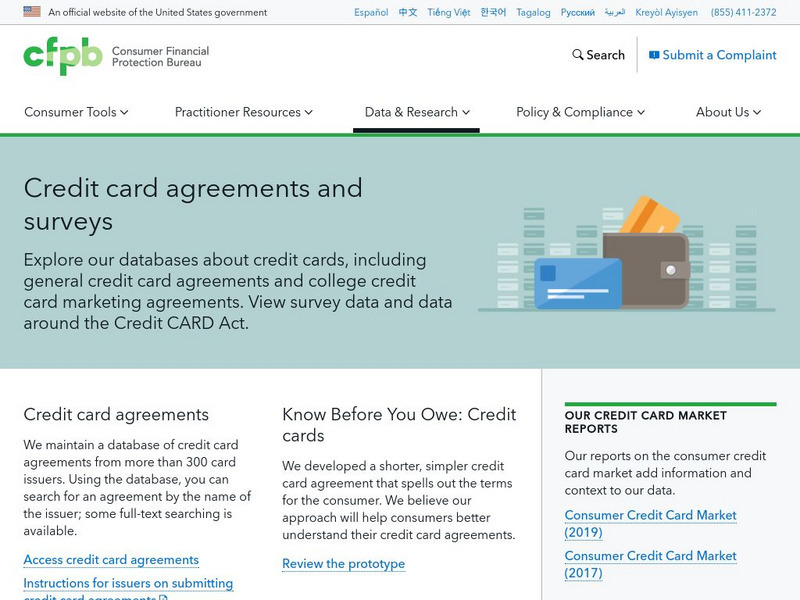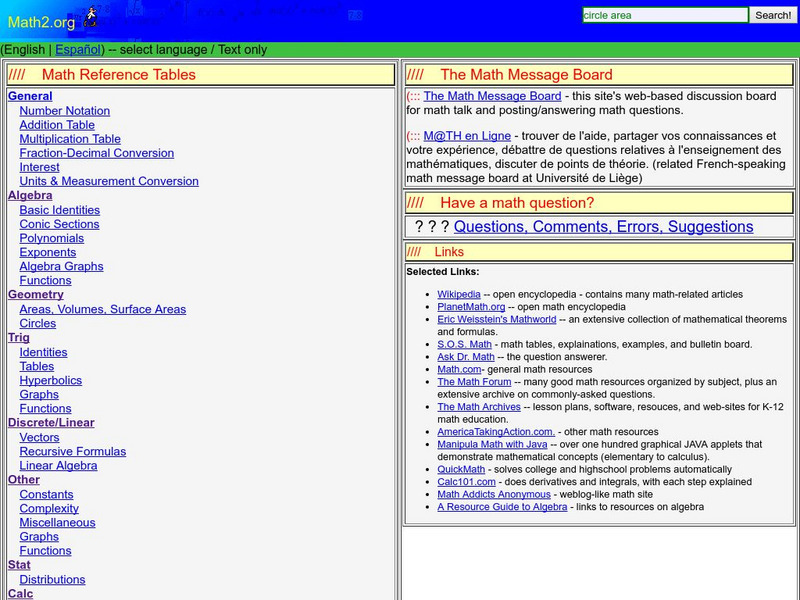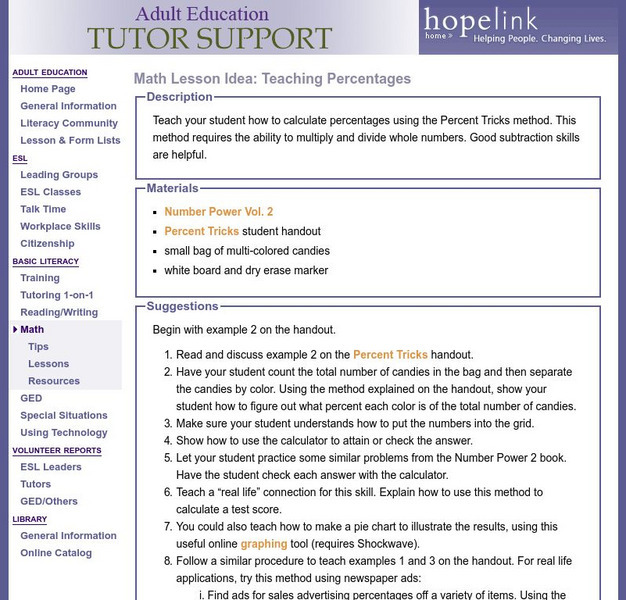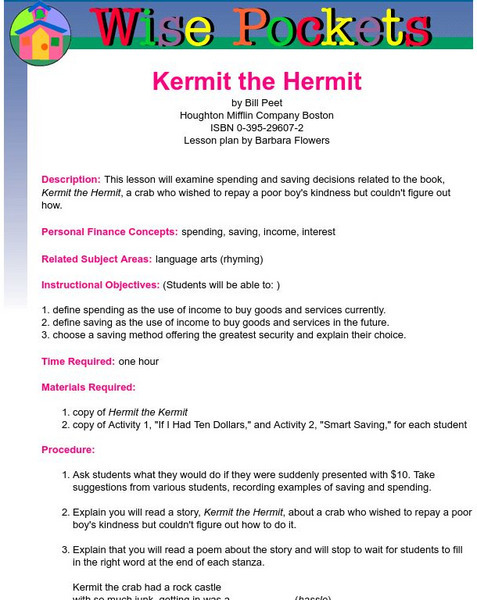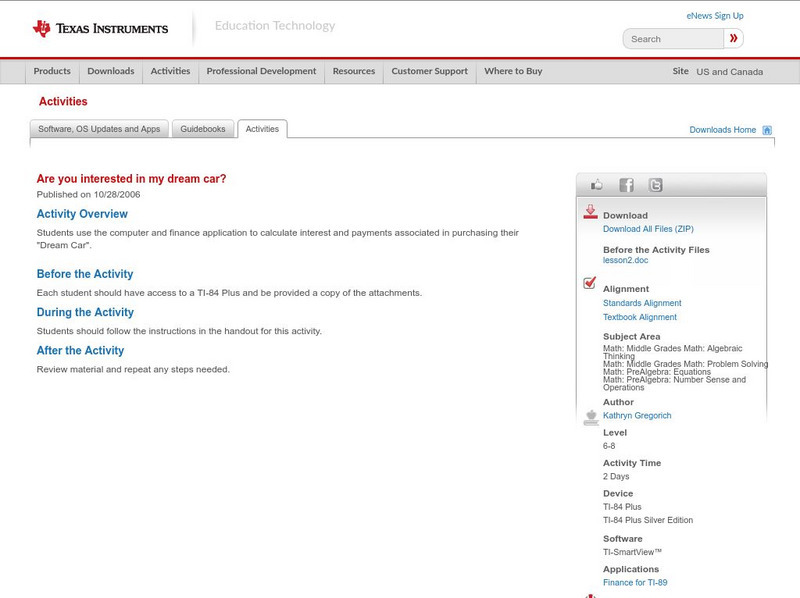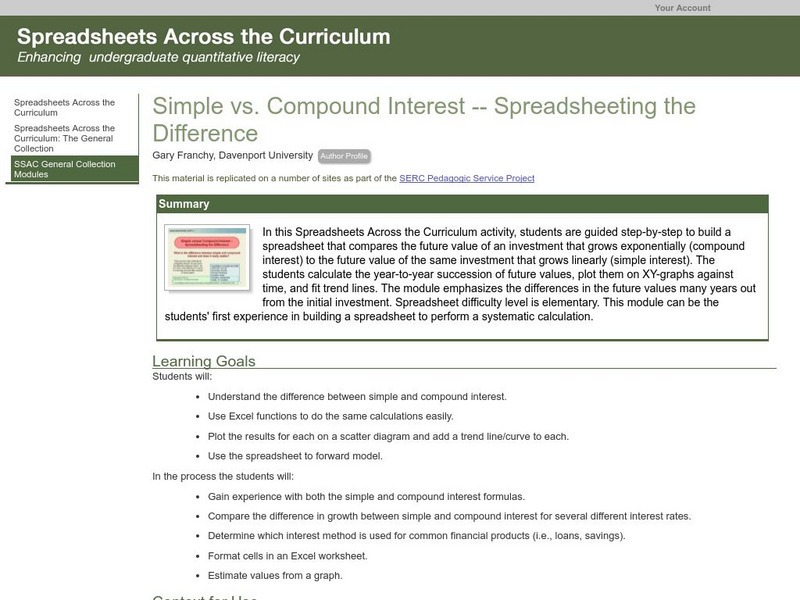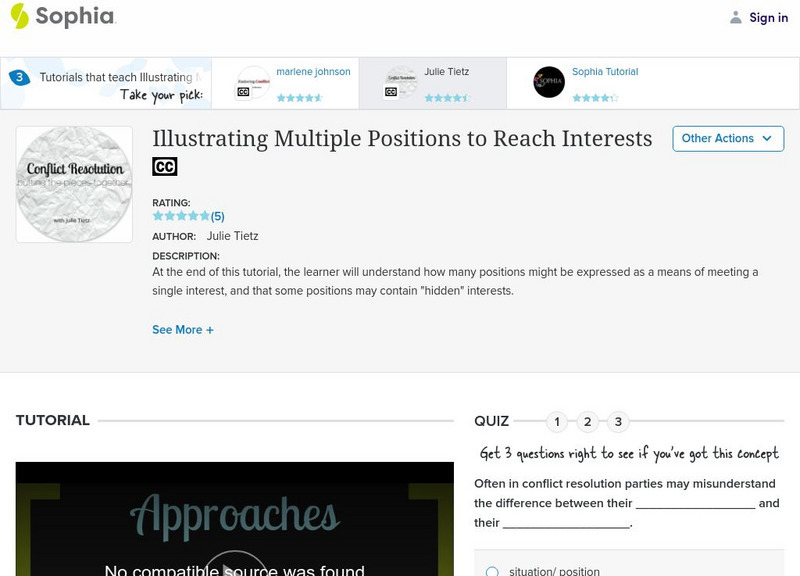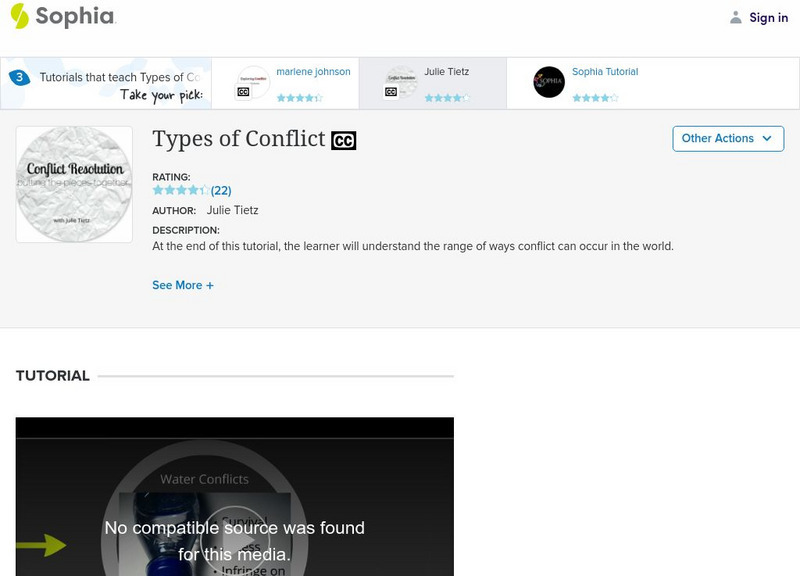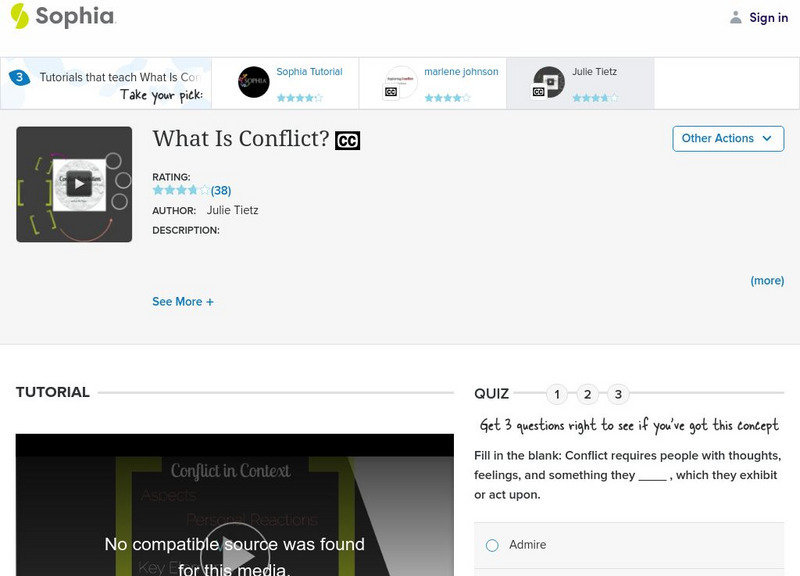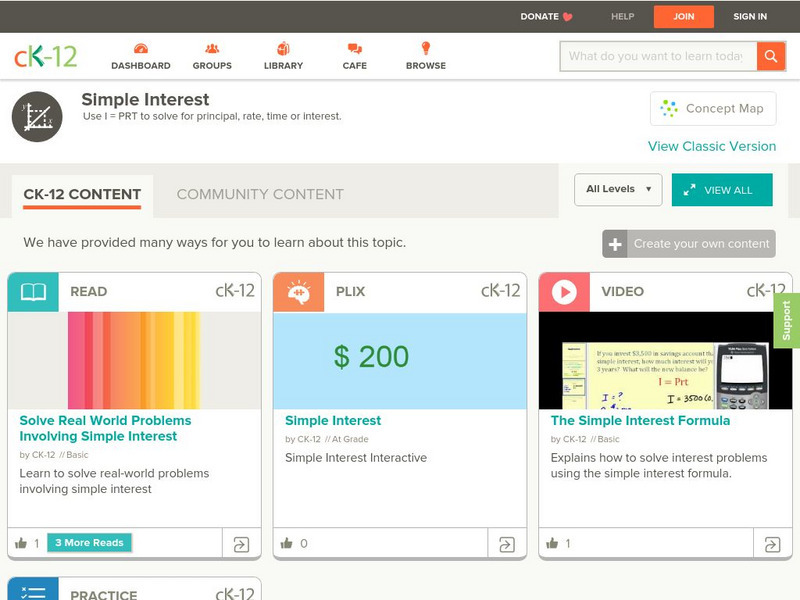Hi, what do you want to do?
Other
Finra Investor Education Foundation: Introduction to Earning Interest
In this lesson, students will learn about the concept of compound interest and understand its effect on savings. They will also learn how to compute simple and compound interest.
Scholastic
Scholastic: Plan, Save, Succeed! Achieving Financial Literacy Goals
Learners will understand how a budget is created and how it can support good financial decision-making. They will begin to consider the role that saving plays in financial planning.
Consumer Financial Protection Bureau
Consumer Financial Protection Bureau: Credit Cards
Thinking about opening a credit card? This resource gives consumers information about maneuvering the credit process. Use the interactive guide to learn more about terms and fees offered by credit cards. Also, open the online calculator...
Math2
Math2
This is a site for students and teachers of all grade levels. If you are looking for math tables, general information about math topics, or you would like to ask a question, this is the site to visit.
Hopelink
Hopelink: Teaching Percentages
Students can brush up on percentage skills with this lesson and calculate percentages using the "Percent Tricks method." For students to successfully use this method, they must have the ability to multiply and divide whole numbers.
National Council of Teachers of Mathematics
The Math Forum: Ask Dr. Math; Interest
This Math Forum site gives links students' inquiries involving calculating both simple and compound interest for a variety of situations.
University of Missouri
University of Missouri St. Louis:wise Pockets: Kermit the Hermit
This is an elementary level instructional activity that deals with spending, saving, income, and interest. Requires the book Kermit the Hermit by Bill Peet. Includes detailed lesson plan along with procedures and activities.
University of Missouri
University of Missouri: Wise Pockets: Berenstain Bears' Trouble With Money
Using a Berenstain Bears' book, students are introduced to concepts such as spending, goods, services, income, saving, and interest. Lesson is detailed and has good activities. Includes questions about the story that teach students about...
Texas Instruments
Texas Instruments: Bonds and Bond Yield to Maturity
In this activity, learners will deal with Bonds, that are long-term promissory notes, specifying that the creditor will receive regular interest payments for the term of the agreement and then receive the face amount of the bond....
Texas Instruments
Texas Instruments: Numb3 Rs: Financial Futures
Based off of the hit television show NUMB3RS, this activity shows students how money invested at different interest rates grow differently. The lesson focuses on aspects of interest such as compounding, length of time between...
Texas Instruments
Texas Instruments: Continuous Compounding
In this activity, students deal with financial computations, where the interest is compounded continuously. Depending on the length of each compounding period, students will determine the number of compounding periods.
Texas Instruments
Texas Instruments: Are You Interested in My Dream Car?
Students use the computer and finance application to calculate interest and payments associated in purchasing their "Dream Car".
Science Education Resource Center at Carleton College
Serc: Simple vs. Compound Interest Spreadsheeting the Difference
A lesson plan that includes a PowerPoint learning module for students. The goal of the lesson is to learn the difference between simple and compound interest and to use the functions in Excel to perform the calculations and graph the data.
ArtLex
Art Lex: Emphasis
A complete description of the term, "emphasis," with links to show how emphasis relates to art. Includes examples of work by Klimt, Demuth, and Minor.
PBS
Pbs Lesson Plan (Affluenza): Credit Quandaries
"Credit cards are not free money." Just how do credit cards work? This site provides a lesson in which students investigate the lure of credit card companies, the pitfalls of credit debt, and the impact of credit debt on our society....
Other
Resources for Implementation: Isabella's Credit Card
A lesson in which students use real-world problems to better understand the math involved in credit card purchases and interest payments.
Thinkport Education
Maryland Public Television: Sense and Dollars
Engaging, fun tutorials and interactive games related to earning, spending, saving, and budgeting money.
Sophia Learning
Sophia: Illustrating Multiple Positions to Reach Interests
At the end of this tutorial, the learner will understand how many positions might be expressed as a means of meeting a single interest, and that some positions may contain "hidden" interests.
Sophia Learning
Sophia: Types of Conflict: Lesson 6
At the end of this tutorial, the learner will understand the range of ways conflict can occur in the world. It is 6 of 7 in the series titled "Types of Conflict."
Sophia Learning
Sophia: What Is Conflict? Common and Practical Definitions: Lesson 2
At the end of this tutorial, the learner will understand in a general sense the definition of conflict. It is 2 of 5 in the series titled "What is Conflict? Common and Practical Definitions."
Sophia Learning
Sophia: When Interests Are Values: Lesson 1
At the end of this tutorial, the learner will understand that some interests may be expressions of a party's personal values, and that values cannot be mediated. It is 1 of 3 in the series titled "When Interests are Values."
Illustrative Mathematics
Illustrative Mathematics: 7.rp.3 Lincoln's Math Problem
The purpose of this task is for students to solve a multi-step problem involving simple interest. The Aligns with 7.RP.A.3. The task provides both a problem and the solution.
Math Is Fun
Math Is Fun: Interest (An Introduction)
What is interest? What is the difference between simple interest and compound interest? Find the answers to these questions, learn how to calculate interest for a loan, and see how interest can help your money grow. Includes ten practice...
CK-12 Foundation
Ck 12: Arithmetic: Simple Interest Equation to Find Interest Rate
[Free Registration/Login may be required to access all resource tools.] In this lesson students use the simple interest equation to find an interest rate. Students examine guided notes, review guided practice, watch instructional videos...







